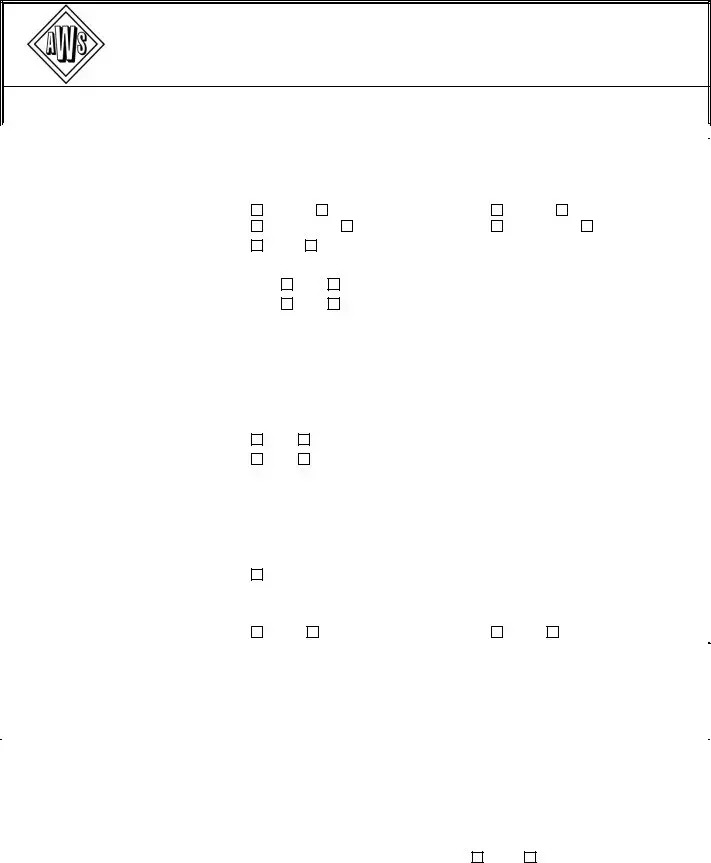The Welder Performance Qualification Record form serves as a crucial document in the welding industry, capturing essential details about a welder's qualifications and competencies. It includes the welder's name, identification numbers, and the date of the qualification test, ensuring that each record is unique and traceable. The form outlines the specific welding processes utilized, such as manual or automatic methods, and specifies the type of base metals and filler materials involved. It also provides information on the thickness of the materials being welded, as well as the diameter of pipes or tubular structures, which are key factors in determining a welder's skill level. Furthermore, the form details the test positions and progression, indicating whether the welding was performed in an uphill or downhill manner. Important results from mechanical tests and non-destructive examinations, such as radiographic testing, are also documented, affirming the integrity of the welds produced. By certifying that all statements within the record are accurate, the form not only validates a welder’s capabilities but also ensures compliance with industry standards, such as those set forth by the American Welding Society. This comprehensive documentation plays a vital role in maintaining safety and quality in welding practices across various sectors.

